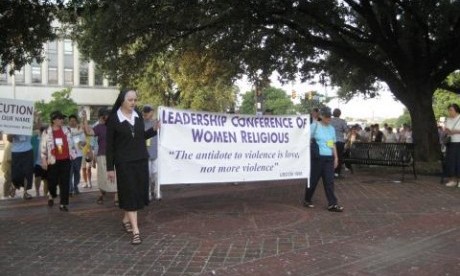It is almost instinctively that one reaches, when attempting to explain what is going on today in the Catholic church, for metaphors out of the natural world — storms, earthquakes, seismic shifts — to get at the magnitude of events.
We search for the terms that explain what we’re experiencing: phenomena beyond the ordinary disturbances we’ve learned to weather one season to the next. Just as seismologists or climatologists begin to put together patterns over time, to construct a mega-image of what is happening, so are we. Another piece of the puzzle has just fallen into place for us with the delivery last week from the Vatican of the “Doctrinal Assessment of the Leadership Conference of Women Religious.”
The 5.8 earthquake that hit the East Coast in August was insignificant by West Coast standards, yet it was felt hundreds of miles from its epicenter in Virginia. Geologists explained that the earth’s crust in this part of the world is more dense and less disturbed and fractured than that in the usual earthquake zones, allowing the seismic waves to travel farther than they would, say, in Los Angeles or San Francisco.
In a similar way, the shockwaves emanating from the Second Vatican Council (1962-65), a gathering unlike any that preceded it in tone, purpose and language, have reverberated through the relatively undisturbed crust of the institutional church’s presumptions and leadership culture. The assessment of the nuns is the latest of the aftershocks. This council, popularly known as Vatican II, did not announce anathemas; did not condemn heresies, as was the case with others; did not dwell on dogma or establish new lines for who’s in and who’s out of the community.
Instead, to state the matter broadly, it asked that we all go to the roots of who we are as a people of God and to figure out what that means in the contemporary world. And while it is a far more complex story — indeed, a universe of stories — than can be done justice in the space of this essay, we can know some things about what’s happened since we began to feel the rumblings beneath the ecclesiastical crust. Continue reading
Sources
- Tom Roberts in National Catholic Reporter
- Image: LCWR
